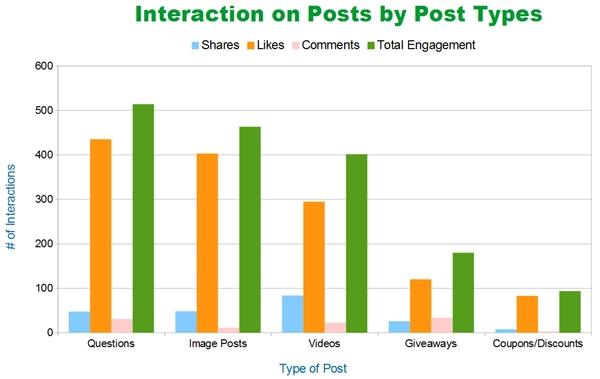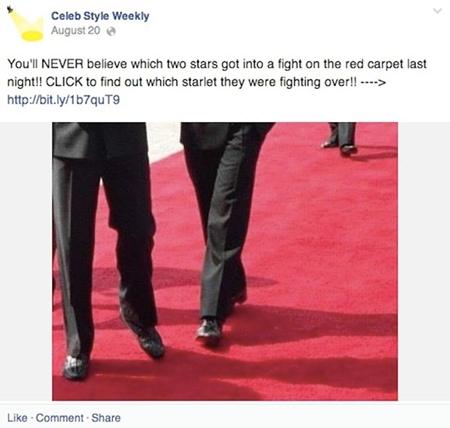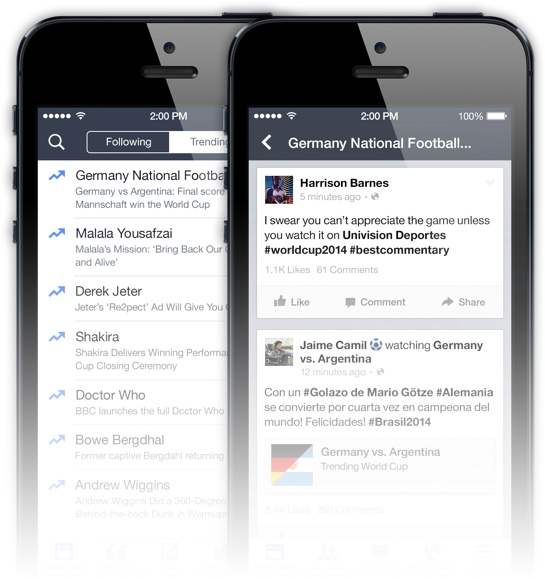Dominating Facebook! That's what brands want. But as you have probably already experienced, that's a tough challenge.
There is growing pressure on marketers to build a relevant follower base, keep them engaged, and further grow audiences without compromising quality.
Organic reach on Facebook has decreased to negligible levels in the past few years: When you post something now, only a small fraction of your followers will see it. Facebook's algorithm filters out 1,500 potential stories in the average News Feed, allowing around only 300 to be seen by a user.
Even posts from friends are given preference over updates from brand pages, making it even harder to reach your audience.
As a result, most of the tricks and tactics that worked on Facebook a few years ago won't work anymore; today, they can actually harm your page's ranking potential.
Here are eight potential mistakes you could be making—and some tips on how to avoid them.
1. Encouraging people to take an action
Since people prefer friends' posts over promotional posts, in 2015 brand pages asking followers to buy, download, or enter contests were cracked down on. If you still encourage your followers in your posts to take an action (such as click, like, or share), then it's time to ditch the practice.
Facebook surveyed its users, and it turns out they don't want to see posts that...
- Push people to buy a product or install an application
- Want people to enter promotions
Asking people to buy or download your stuff might work for the short term, causing spikes in your metrics, but it will be rebalanced by News Feed over time, and eventually your post rankings will be worse. Don't be promotional.
2. Not tagging related pages
Tagging other pages is not a new feature on Facebook, but lot of pages still don't use it. Once you tag a related page in your update, your update can be visible to those who are following that page.
If your page is about football, in general, then tagging other football club pages like Manchester United (when it makes sense) could easily extend your reach.
3. Sharing text-only updates
Text-only updates from pages aren't received as well as similar updates from friends. The only way to boost your update's performance organically is to include an image to your text updates or to attach a link and let Facebook pull the image.
Some pages report higher engagement for their link posts; others say videos and image-only posts get the highest engagement. There is no one best post type on Facebook, since each page has a different set of followers with different preferences. If your audience prefers videos over link posts, then your reach and engagement will be lower with link posts, since the post type is not really what your audience engages the most.
In general, as the following chart shows, videos, posts with images and links perform the best in the News Feed.
4. Don't recycle your content too often
Facebook restricts spammy posts in users' News Feed. Reposting the same content over and over again could be considered being spammy. These types of post are typically those that link to websites and don't provide value to the readers.
5. Showing link text in your post copy
I often see pages sharing images and attaching links in the post text. Don't be that guy. Use the native link format, and let Facebook pull in the title, description, and picture.
6. Using click-bait titles
Buzzfeed and other viral-content sites raised/lowered headline writing to new levels by capitalizing on readers' curiosity.
It eventually became obvious that the sole intent of these click-bait titles was to entice people to click through to the website, and some pages just went too far. They started using headlines containing phrases like "You won't believe what happened next!" These headlines were really tempting, but most of them didn't provide any value to the readers. And Facebook knew it.
So, Facebook started measuring time spent on these pages as an indicator of content quality. If people stay longer on that website, then it means they are satisfied with that content. Facebook also measures the ratio of people clicking on that content compared to post engagement (likes, shares, comments). If many people click without liking, sharing, or commenting on the post, then it could be considered a click-bait article.
7. Not relying on timely events
Facebook also measures the engagement rate of each post, focusing on updates that get high engagement in a short period of time. If people engage with that post right after it was published, then it's an indicator that the post is most interesting at the time it was posted (and probably less relevant later). Facebook will give a boost to trending topics such as sport events, TV shows, and personal updates.
To harness the power of newsworthiness, be sure to monitor, in real time, how your content is being shared. If it starts increasing shortly after you publish, it's a good indicator that your audience finds that content engaging and it's time to put some money behind that post and further boost its reach. This content promotion strategy could result in not just higher reach but also higher engagement rate and more social traffic to your website.
8. Not capitalizing on trending topics
Most popular topics by country are shown in a list alongside the News Feed. It makes it super easy to find every trending story about a given topic. On desktop, it can be found on the right side; on mobile, it's in Facebook Mentions.
We ran an experiment while Facebook's F8 conference was taking place. We simply shared our article on Facebook and added the conference's trending hashtag. Our post's reach increased 20-30% compared with average post performance.
Conclusion
Facebook has a clear message to pages: Provide value to your audience; don't try to trick the system and you will be fine.
But don't expect your organic reach to skyrocket by simply avoiding these mistakes. Doing so can help you optimize your Facebook strategy, but we just barely scratched the surface. For significant results, you have to be more relevant to your audience by optimizing targeting, creating high-quality, engaging content, and sharing it with your audience when they are most likely to engage with it.








